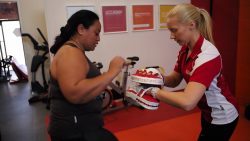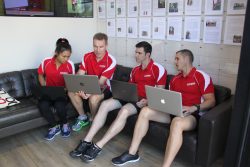
The most common type of Personal Training “job” you will find advertised is the gym rent model. What this involves is you being your own business owner, you need to have an ABN, manage your own finances, tax, superannuation and pricing – and you pay weekly rent to the gym in order to use their facility to train your clients. The gym may provide you with the names of new members, but you’ll largely be working on your own to recruit clients, book in appointments, conduct Training sessions and consultations.
Most of this information should be covered in your business plan and marketing plan (which you should definitely already have planned out if you’re considering running your own business) – but let’s lay it all out and see how it looks.
Rent cost
You’ll be looking at around $300 a week, and most gyms will ask you to sign a 12 month lease agreement.
$300 a week x 52 weeks = $15,600 a year.
Let’s say you charge $60 per session, you would need to complete 5 sessions per week in order to cover your gym rent.
(This is assuming you never take a week off! If you plan to take time off for a holiday or sick leave you will need to increase your weekly sessions to create a buffer for your unpaid time off)
Sessions per week
If you wanted
22 sessions a week means 4-5 sessions (hours) a day, 5 days a week. But don’t forget that you don’t get paid for any of your phone calls, your time spent booking appointments, offering free sessions or consultations, balancing your books, processing payments and any marketing you undertake. You will likely
spend as many hours on these tasks as you do training, so 22 hours training quickly becomes a full 40+ hour work week.
Closing ratio
Let’s say your closing ratio is 20% (meaning out of your consultations, 20% or about one-fifth sign up to be clients, 20% would be considered a fairly high closing ratio when working inside a gym environement where the majority of members are NOT looking for a PT, they are just wanting to have a basic membership) – in order to get those 11 clients you need you would need to complete 55 consultations. Remember that those clients won’t all continue to train, you will have a significant attrition rate – let’s say about one third drop out each month, that means you need about 3-4 new clients each month, so that means about 20 consultations each month.
In addition to this, many gyms have a large number of Trainers for a limited number of clients. You will find yourself competing with other Trainers in the same facility for the same clients, so you need to figure out how and where you will find 20 new people to offer consultations to each month, and why they will choose you over the other trainers.
If you are a fantastic Trainer, you are very efficient, have good reliable clients and you are an excellent sales person, then this type of gym rent role can work well for you! However if you are shy, struggle with sales, are not highly organised or struggle with marketing then this role can be very challenging for you just starting out in the industry!
If these numbers worry you, have a look at some alternative job options, find out what Fitness Enhancement can offer you for PT jobs and Franchise opportunities.


